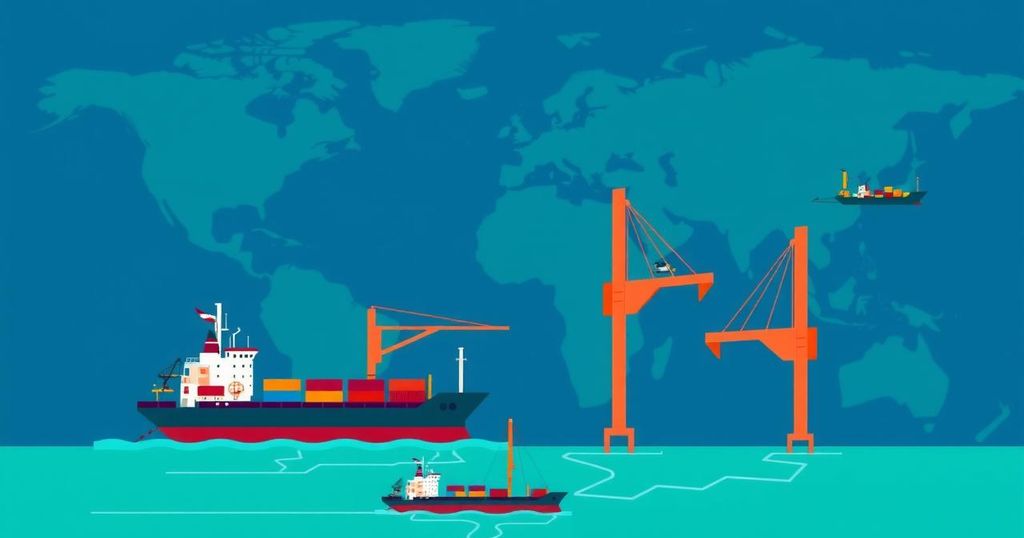President Trump announced a 10% baseline tariff on imports, including a 38% tariff on goods from Guyana, escalating the trade war. The changes threaten to reverse trade liberalization, raising prices globally and fostering retaliatory measures from trading partners. Economists warn of adverse effects on the global economy and increased living costs for Americans.
President Donald Trump has announced a significant increase in tariffs, imposing a 10% baseline tariff on all imports to the United States, which includes a hefty 38% tariff specifically on goods from Guyana. This decision escalates the ongoing trade war, marking a reversal of decades of trade liberalization and establishing new barriers around the U.S. economy, the world’s largest consumer market.
Trump displayed a poster indicating retaliatory tariffs of 34% on China and 20% on the European Union, aligning with his long-standing belief that global trade has negatively impacted American workers and companies. With these tariff increases, trading partners may respond with countermeasures, resulting in higher prices for various products, including bicycles and wine.
The administration confirmed that these tariffs would take effect immediately after the announcement, though the formal notice for enforcement is still pending. Additionally, separate tariffs on auto imports are set to begin on April 3, further complicating the trade landscape. So far, Trump has already instituted a 20% tariff on imports from China and a 25% tariff on steel and aluminum.
Trump’s advisers assert that these tariffs are intended to restore crucial manufacturing capabilities to the United States. However, external economists caution that such measures may lead to a slowdown in the global economy, heighten recession risks, and significantly increase living costs for American families. The uncertainty surrounding these tariffs has created challenges for businesses trying to plan their operations effectively.
Concern surrounding tariffs has affected global manufacturing activity, prompting consumers to hasten purchases of imported goods to avoid prospective price hikes. Financial markets have displayed considerable volatility in response to these developments, with U.S. stocks losing nearly $5 trillion in value since February as investors reacted to the unpredictability of the situation.
In summary, President Trump’s recent tariff announcements signify a bold move toward protectionism, with immediate ramifications for international trade relationships, potential economic consequences, and rising consumer costs. The long-term effects of these tariffs remain uncertain as businesses seek to adapt to an evolving trade landscape. As responses from trading partners become clearer, market volatility and economic fluctuations may follow suit.
Original Source: www.stabroeknews.com




